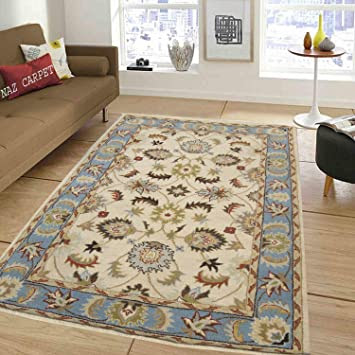Persian Carpets in Dubai, Abu Dhabi And Al Ain-What Are Benefits of Persian Carpets?
Persian Carpets come in a variety of shapes and sizes, which means that when choosing one, you should consider the size of the room in which it will be placed. Wool carpets, for example, are practical and sturdy, but silk carpets have a more delicate pattern and are designed more for decorative purposes. Some of these carpets are even hung as wall decorations.
Silk and wool are the main materials used in making Persian Carpets Dubai. Wool is the most commonly used, but quality varies greatly depending on the breed of sheep and the pastures they graze on. Silk, on the other hand, allows for a more precise pattern and gives the carpet a shiny appearance. However, despite the beauty of silk carpets, wool is still the most common choice for most Persian carpets.
Made from sheep's wool
Wool is the basic material of Best Persian Carpets Dubai, and the pile is made from sheep's wool. The quality of the wool depends on the breed of sheep, and shearing takes place in spring and fall. The spring shear produces the highest quality wool, while the fall shear yields lower-grade wool. The higher grades of wool are called "kurk" or "kork wool," and are obtained from the neck and underbelly of the sheep.
Buy Persian Carpets Dubai are made using traditional methods of weaving, with many different types of patterns available. Some of these carpets are hand-woven while others are machine-woven. The number of knots per square inch (KPSI) or KPSM (Knots Per Square Meter) is often used to determine the quality of a Persian carpet. A good quality Persian carpet will contain between 120 and 330 knots per square inch.
Reflect a nation's history and culture
Historically, carpet weaving in Iran has been an integral part of the economy of the country. Today, the industry employs traditional dyeing techniques, traditional tribal patterns, and innovative designs. Since ancient times, hand-woven Persian Carpets Suppliers in Dubai have been regarded as objects of high artistic and utilitarian value. While pile-woven carpets have gained fame, flat-woven carpets are also part of the rich history of Iranian carpet weaving.
Representative of the region or nomadic tribe
Persian carpet patterns are typically representative of the region or nomadic tribe. For example, a Tabriz carpet may have delicate and subtle designs, whereas a Kerman carpet may be simple and modest. Different carpets were also woven for different occasions. A Qashqai bride would have her wedding carpet woven for her.
Persian carpets are some of the finest in the world. Their intricate designs and inimitable craftsmanship make them a fantastic investment. And they reflect a nation's history and culture. Every knot and pattern on a Persian rug tells a story and can transport you to a special moment in time.
The history of Persian carpets can be traced back to the Sassanid dynasty. In the 16th century, the Safavid king made the most significant advances in the carpet industry. His king established a vast network of factories and workshops in Isfahan. These workshops transformed nomadic crafts into regal industries.
Carpetsdubai.com
Way to contact Us
Call us now on 00971-56-600-9626 or e mail us on sales@carpetsdubai.com. To request unfastened appointment – to estimate for quotation, see http://www.Carpetsdubai.Com/request-quote/
To look our style of merchandise go to our internet site www.carpetsdubai.com
We serve our customers throughout dubai,abu dhabi,sharjah,ajman,al ain,fujairah,ras al-khaimah and umm al quwain
Our region on google maps is for Dubai
https://goo.gl/maps/Bqfv4DDkWCDyvoeJA
Follow us on Social media
https://twitter.com/carpetsdubai1
https://www.instagram.com/carpets_dubai/
https://in.pinterest.com/carpetsdubai/
https://www.facebook.com/carpetsdubai/
Email: sales@carpetsdubai.com
Phone: 0566009626
We serve our Clients across Dubai,Abu Dhabi,Sharjah,Ajman,Al Ain,Fujairah,Ras al-Khaimah and Umm al Quwain
Read More : https://vinyflooring.blogspot.com/2022/07/stair-carpets-dubai-abu-dhabi-and-al_27.html




Comments
Post a Comment